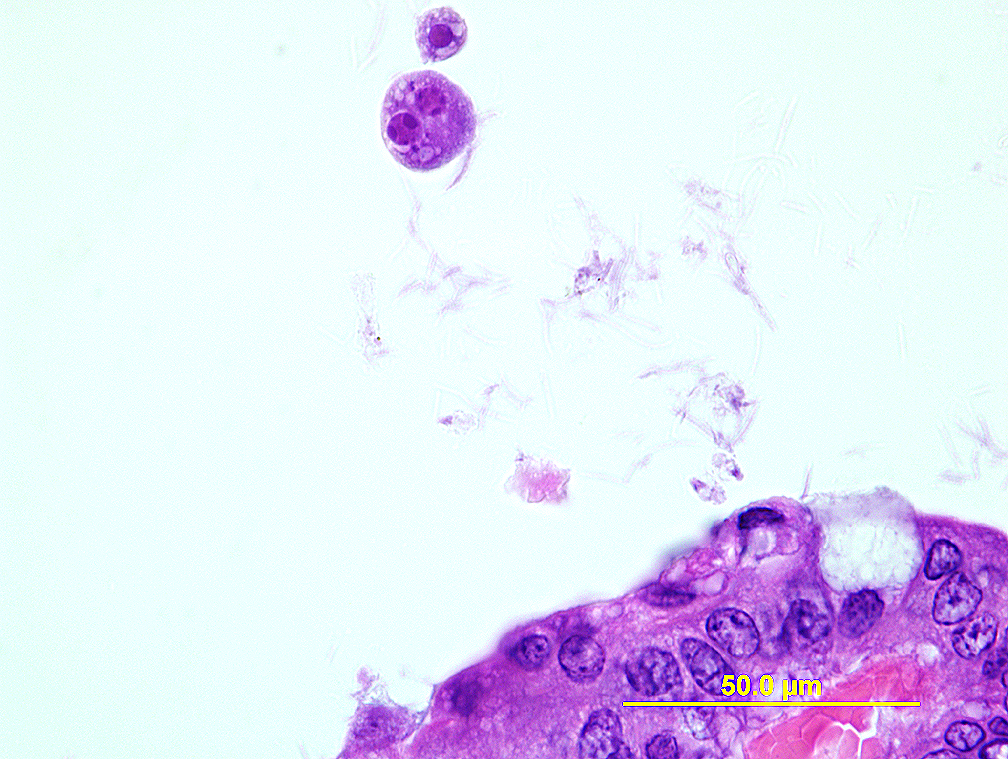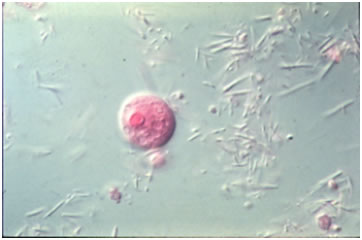
Etiology: Entamoeba muris is a one celled, eukaryotic organism.
Incidence: Incidence of infection is common.
Transmission: Fecal-oral transmission via ingestion of infective cysts.
Distribution: Entamoeba muris is found in the cecum and colon.
Clinical signs: Clinical signs are not usually observed. These protozoa may proliferate in diarrheic state; however, their role as contributors to disease is poorly understood.
Diagnosis:
Antemortem: PCR of feces can be used for diagnosis.
Postmortem: Wet mounts of intestinal contents may reveal cyst forms, or globular trophozoite amoebas with slow extension of pseudopods.
Diagnostic morphology: 15-24 µm round cyst with 1-8 nuclei (nucleus number increases from 1 to 8 with maturity) and vacuoles. Immature cysts tend to have larger and more vacuoles than mature forms. Nuclei of both amoeba and cyst forms have eccentric karyosomes.
